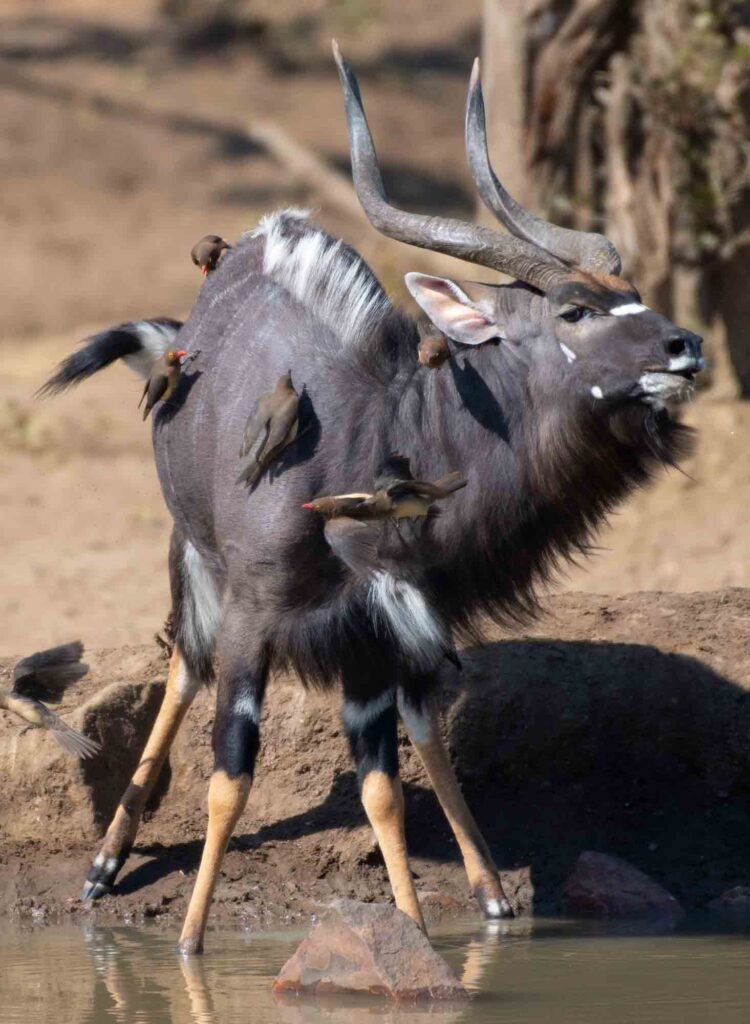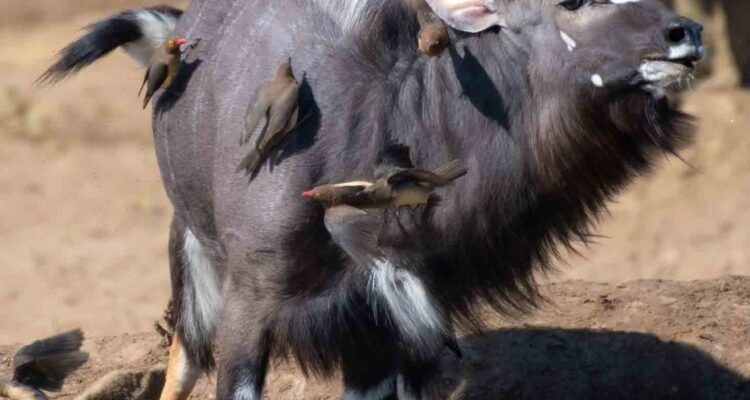
So, let’s chat over a cup of coffee about what makes the nyala unique, how it behaves, and whether or not it poses a threat to us. Think of the nyala as a graceful dancer in the wild; its stunning coat and soft features can easily win anyone over. But beneath that beautiful exterior, it’s essential to understand this creature’s instincts and behavior to determine if caution is needed.
Understanding the Nyala: A Quick Overview
The nyala is a striking antelope, mainly found in the wooded areas of southern Africa, including countries like Zimbabwe, Mozambique, and South Africa. The males are larger, with spiral horns that can grow up to 36 inches long, while the females are smaller and hornless. Their coats come in a rich brown color, which helps them blend seamlessly into their habitats. It’s almost like they wear a natural camouflage!
Socially, nyalas tend to be quite interesting. They live in groups called herds, often consisting of females and their young ones, while males usually prefer to roam alone or in small bachelor groups. This social structure plays a vital role in their survival, helping them avoid predators and stay safe in the wild. But here’s where it gets tricky—while they may look peaceful, their behaviors can change dramatically if they feel threatened.
Are Nyala Aggressive by Nature?
Let’s get this straight: nyalas are not naturally aggressive animals. Most of the time, they prefer to keep to themselves and avoid confrontation. They rely on their ability to blend into their surroundings and stay alert to detect danger early on. Picture them as the introverts of the animal kingdom; they’d rather observe from a distance than engage in a showdown.
However, like many wild animals, their behavior can change dramatically if they feel cornered or threatened. If a nyala perceives danger, especially during mating season or when protecting their young, they might act defensively, which can lead to aggressive behavior. They can kick, charge, or thrash about if they feel they need to protect themselves or their offspring. Here’s the thing: it’s important to respect their space and avoid startling them.
Human Interactions with Nyala: The Good, the Bad, and the Neutral
Interactions between humans and nyalas can vary widely, depending on the context. In general, these animals tend to avoid human contact, which is a good thing. If you’re lucky enough to spot one on a safari, you’ll often see them quietly grazing or drinking from a waterhole. But if you get too close or approach them unexpectedly, you might be in for a surprise.
Respecting their boundaries is crucial. If you ever find yourself in the wild and notice a nyala, it’s best to keep a safe distance. Approaching them too closely, especially during breeding season when males are more aggressive, can lead to unexpected confrontations. Always remember: you’re in their territory, and their reactions can be unpredictable.
Signs of Distress in Nyala: What to Look Out For
Understanding how to read a nyala’s body language is essential. When they are calm, they exhibit relaxed ears and a soft stance. However, signs of distress can be quite noticeable if they feel threatened. Look for:
- Ears pinned back: This usually indicates agitation or fear.
- Tail flicking: A nervous reaction that signals they feel disturbed.
- Stomping or pawing at the ground: This can be a warning that they are ready to defend themselves.
Furthermore, if you notice a nyala snorting or making distress calls, you should take it as a sign to back off and respect their space. Just like a person getting agitated in a crowded room, they might lash out unexpectedly if they feel overwhelmed.
The Role of Habitats and Conservation Efforts
The nyala thrives in specific habitats, usually favoring thickets and dense brush where they can easily hide from predators. Unfortunately, human expansion and habitat destruction are pushing these beautiful creatures into smaller areas, leading to more encounters with humans. Conservation efforts are crucial to ensuring that nyalas have safe spaces to live, away from human interference.
Protecting their habitats not only benefits the nyala but also helps maintain the biodiversity of the regions they inhabit. Preserving these environments allows them to flourish while minimizing potentially dangerous encounters with humans. It’s a win-win situation!
When Are Nyala More Dangerous?
While nyalas are usually shy, certain situations can make them feel threatened, which could lead to dangerous behaviors. Mating season is a prime time when male nyalas become more aggressive as they compete for females. If you happen to encounter a male during this time, it’s best to keep your distance.
Additionally, if a mother nyala feels her calf is in danger, she’ll do anything to protect it. This instinct can lead to surprising bursts of aggression. Again, it’s all about respecting their space and the natural order of things.
In summary, the nyala can be a beautiful and fascinating creature, but it’s crucial to understand their nature and behavior. While they aren’t typically dangerous to humans, they can become aggressive if they feel threatened or provoked. Just like any wild animal, respecting their space and observing them from a distance is the best way to ensure a safe and enjoyable encounter.
Next time you think of the nyala, remember to appreciate their charm while also keeping in mind their wild instincts. After all, even the gentlest of creatures can have a surprising edge when their safety is at stake. By understanding and respecting these marvelous animals, we can coexist safely with the wildlife that surrounds us.

